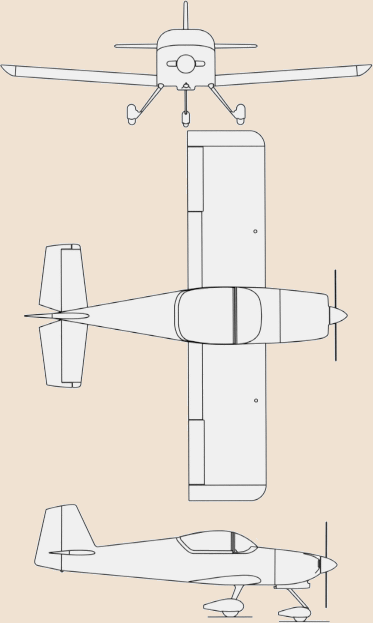Sun, Aug 17, 2008
Fatal Accident Occurred As A/C Went Down At A "Steep
Angle"
 Scud running... it's the bane of many a VFR flyer who can't or
won't file IFR or stay on the ground when the conditions tend to
start the bird walking. It appears that another pilot has fallen to
this hazard... and we can only hope (forlornly, we'd imagine) that
he might be the last.
Scud running... it's the bane of many a VFR flyer who can't or
won't file IFR or stay on the ground when the conditions tend to
start the bird walking. It appears that another pilot has fallen to
this hazard... and we can only hope (forlornly, we'd imagine) that
he might be the last.
NTSB Identification: DEN08LA139
14 CFR Part 91: General Aviation
Accident occurred Monday, August 11, 2008 in Muskogee, OK
Aircraft: Dickey RV-6A, registration: N22163
Injuries: 1 Fatal.
This is preliminary information, subject to change, and may
contain errors. Any errors in this report will be corrected when
the final report has been completed.
On August 11, 2008, about 1325 central daylight time (CDT), a
Dickey RV-6A experimental airplane, N22163 impacted terrain
following a loss of control while conducting a cross-country
flight. The instrument-rated private pilot was fatally injured. The
airplane was destroyed. The personal flight was being conducted
under the provisions of Title 14 Code of Federal Regulations Part
91 without a flight plan. Instrument meteorological conditions
prevailed at the time of the accident. The flight originated at
Fayette County Airport, Tennessee (FYE) with an intended
destination of Borger, Texas (BGD).
Witnesses indicate the engine was running at the time of impact.
Law enforcement officials stated the weather at the time of the
accident was cloudy and misty with visibility less than 1 ½
mile. Weather at Davis Field Airport, Oklahoma (MKO) at 1353 CDT
was overcast skies at 1,100 feet, light rain and 10 miles
visibility.

A examination of the airplane and the accident site indicated
the airplane impacted the ground at a steep angle. The engine and
forward fuselage were buried in an impact crater approximately four
feet deep with the engine resting at approximately 80 degrees.
Airplane wreckage was mostly confined to the point of impact with
some pieces spread across an area approximately 90 feet long by 50
feet wide on a southeasterly heading.
More News
Aero Linx: Model Aeronautical Association of Australia MAAA clubs are about fun flying, camaraderie and community. For over 75 years, the MAAA has been Australia’s largest fl>[...]
Touchdown Zone Lighting Two rows of transverse light bars located symmetrically about the runway centerline normally at 100 foot intervals. The basic system extends 3,000 feet alon>[...]
“Discovery and innovation are central to our mission at Virgin Galactic. We’re excited to build on our successful record of facilitating scientific experiments in subor>[...]
How To Get A Story On Aero-TV News/Feature Programming How do I submit a story idea or lead to Aero-TV? If you would like to submit a story idea or lead, please contact Jim Campbel>[...]
Student Pilot Reported That During Rotation, “All Of A Sudden The Back Of The Plane Kicked To The Right..." Analysis: The student pilot reported that during rotation, “>[...]
 ANN's Daily Aero-Linx (05.02.24)
ANN's Daily Aero-Linx (05.02.24) ANN's Daily Aero-Term (05.02.24): Touchdown Zone Lighting
ANN's Daily Aero-Term (05.02.24): Touchdown Zone Lighting Aero-News: Quote of the Day (05.02.24)
Aero-News: Quote of the Day (05.02.24) ANN FAQ: Contributing To Aero-TV
ANN FAQ: Contributing To Aero-TV NTSB Final Report: Cirrus Design Corp SR20
NTSB Final Report: Cirrus Design Corp SR20




